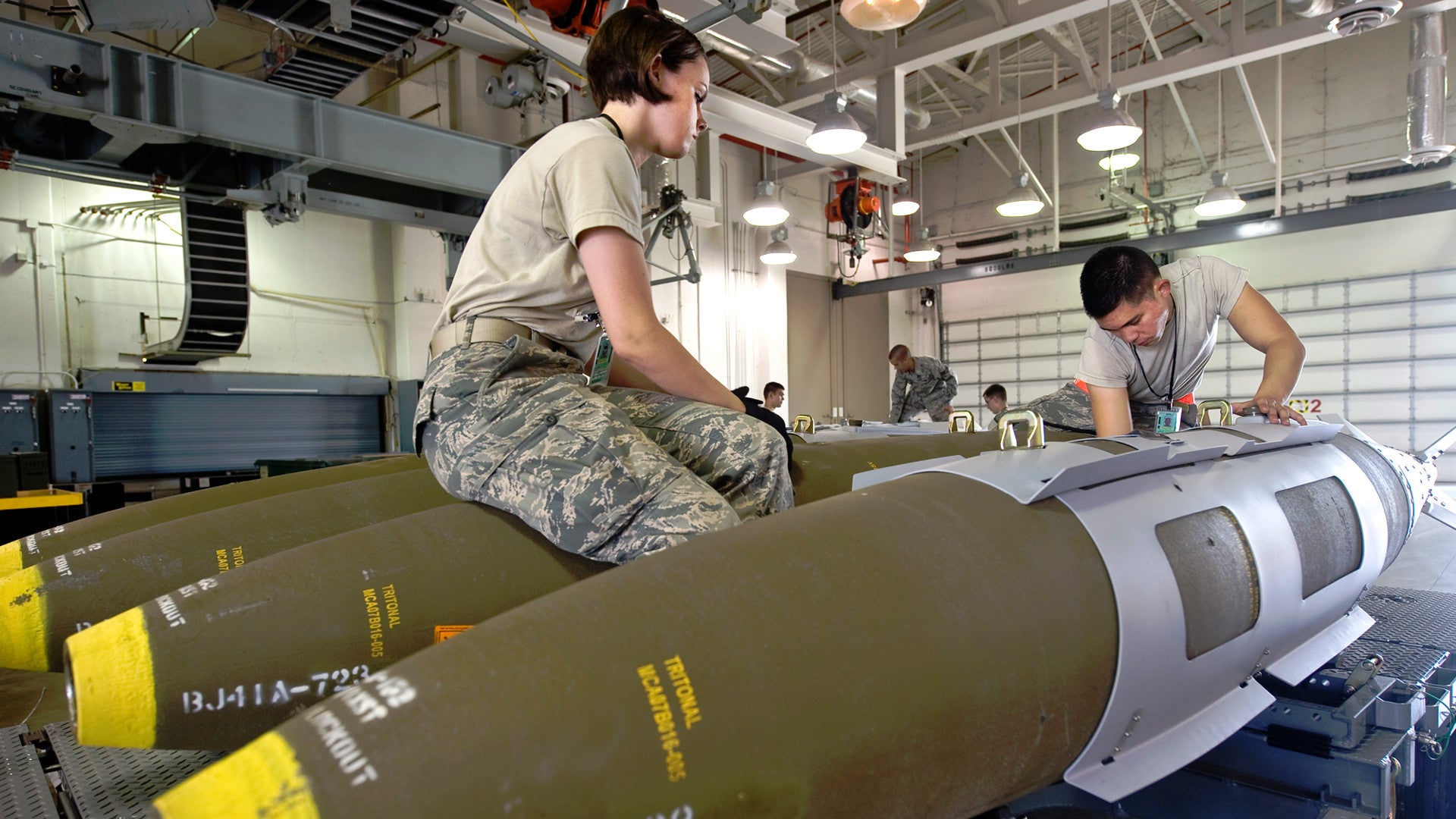Despite the U.S. military’s recent decision to push off plans to abandon certain cluster munitions, the U.S. Air Force still wants to buy a new set of bombs that provide similar effects without the danger of leaving unexploded bomblets scattered around the battlefield. Instead, these new weapons use a cast ductile iron shell to produce a cloud of deadly, but inert shrapnel that can cut through enemy personnel, as well as light structures and vehicles, across wider area than previous, standard high-explosive bombs.
On Feb. 22, 2018, the U.S. Air Force posted a notice on the U.S. government’s main contracting website, FedBizOpps, asking for information from contractors about their ability to produce between 250 and 1,500 BLU-136/B 2,000-pound class cast ductile iron bomb warheads every year for at least the next four years. The service’s budget request for the 2019 fiscal year, which it released earlier in February 2018, included a request for nearly $85 million to purchase both the BLU-136/B and the 500-pound class BLU-134/B, also known as the Next Generation Area Attack Weapon (NGAAW) Increments II and I respectively. The Air Force first began actively developing these two bombs in 2014 as part of the Improved Lethality Warhead (ILW) program.
The basic principle behind the BLU-134/B and BLU-136/B is relatively simple. Unlike the steel, which the Air Force uses for the bodies on its typical high explosive bombs, cast ductile iron is more brittle and therefore more likely to fragment in a more uniform manner, especially with the help of pre-scored seams on the inside of the shell. At the same time, its high graphite content makes it stronger than regular cast iron and better suited to the shock, vibration, and other environmental conditions that bombs experience when combat aircraft carry them aloft and drop them onto a target.
Otherwise, the bombs use the same explosive filler as existing high explosive bombs. The first prototype BLU-134/Bs were actually known as the BLU-111D/B, with the main difference being the new casing.
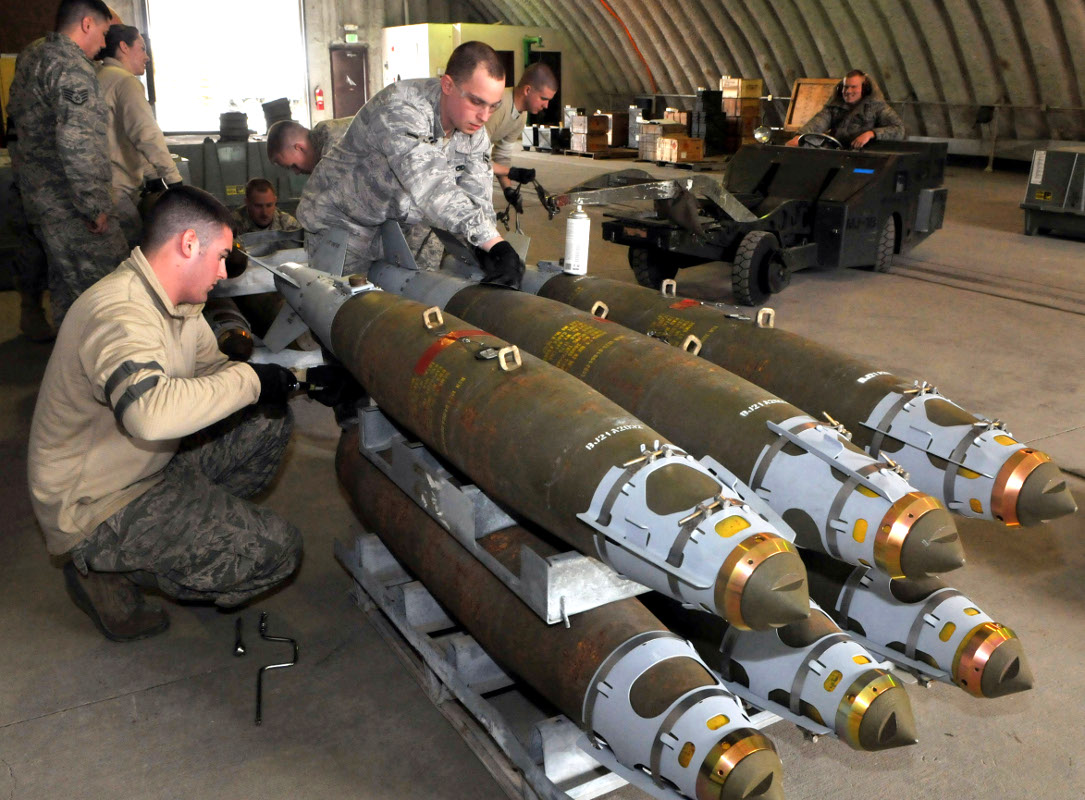
To further improve their effectiveness, the final BLU-134/Bs and -136/Bs have a special height-of-burst sensor-enabled fuze that pilots can set during a mission from inside the cockpit. This allows them to fine tune just how far above the ground the bomb will explode, which has a direct impact on how high and wide an area the shrapnel covers.
By using standard bomb shapes, the Air Force will be able to combine both weapons with existing Joint Direct Attack Munition (JDAM) GPS-guidance and Paveway II and III-series laser-guidance kits to create new precision guided weapons. The bombs will be able to work with dual mode Laser JDAM and Paveway-type kits, as well.
This standardization means that it should be relatively easy for the Air Force to integrate the weapons onto current and future combat aircraft, even stealthy jets such as the F-22 Raptor and F-35A Joint Strike Fighter that feature fully enclosed weapons bays with very firm size constraints. As such, other branches of the U.S. military might be inclined to join the project to acquire the bombs, or additional variants thereof, for their own use, too.
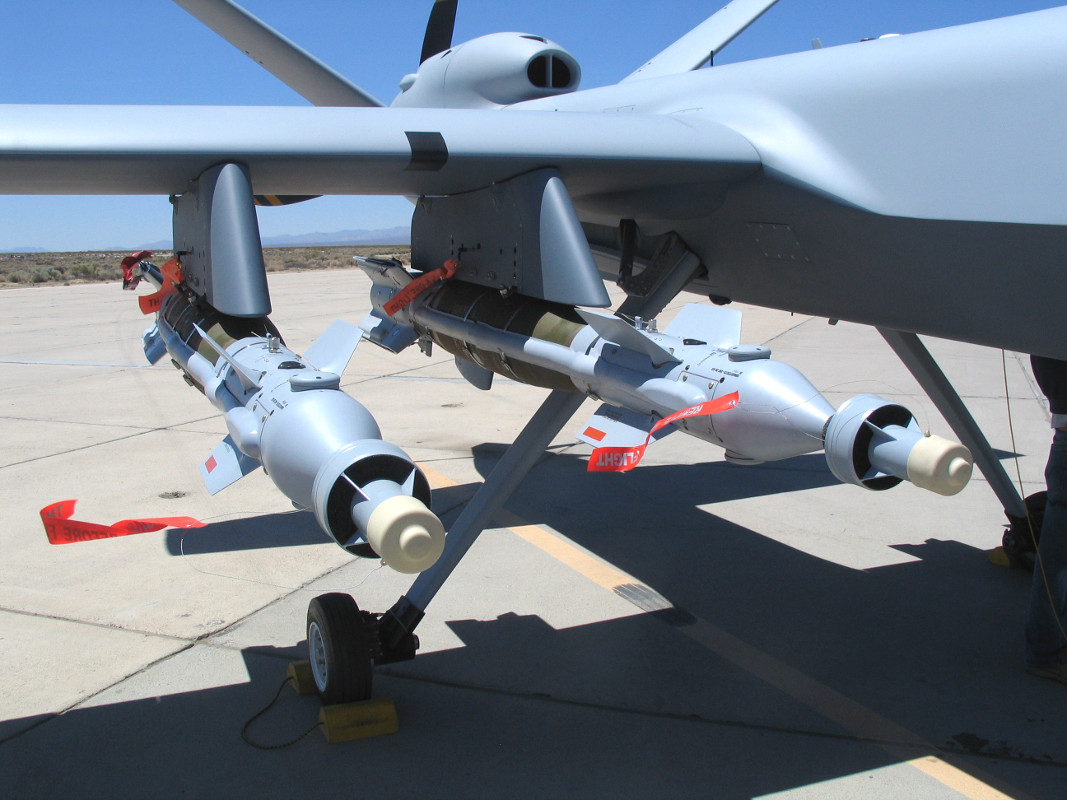
This commonality and backwards compatibility is all by design. The Air Force initiated the project originally to meet Pentagon-wide plans to develop alternatives to existing cluster munitions. Then Secretary of Defense Robert Gates kicked off this initiative under President George W. Bush in June 2008.
The goal was to eliminate any cluster bomb or artillery shell bomblets that failed on average more than one percent of the time by Jan. 1, 2019. This policy shift came in response to the Convention on Cluster Munitions (CCM), an international treaty to which the United States is not party, that bans certain types of cluster munitions on the grounds that they pose a particularly indiscriminate and lasting threat to innocent civilians, especially as a result of their tendency to malfunction and leave unexploded ordnance behind.
Cast ductile iron bombs met the Pentagon’s goal by eliminating the need for those submunitions, and their complicated, miniaturized operating mechanisms, entirely. Since defense contractors had well established manufacturing processes and facilities to build cast ductile iron bodies for inert training bombs, it also presented a particularly cost-effective alternative.
The only problem is that the fragmentation pattern from one of these new weapons simply cannot cover the same area as a cluster bomb, even with the ability to change the height of burst on the fly. The fragments also cannot defeat heavy armor or zero in on a particular target, both features of the Air Force’s CBU-105/B Sensor Fuzed Weapon (SFW) anti-armor cluster bomb and its infrared homing BLU-108/B Sensor Fuzed Munitions (SFMs), which the service keeps in inventory specifically to help defeat large formations of enemy tanks and other armored vehicles.
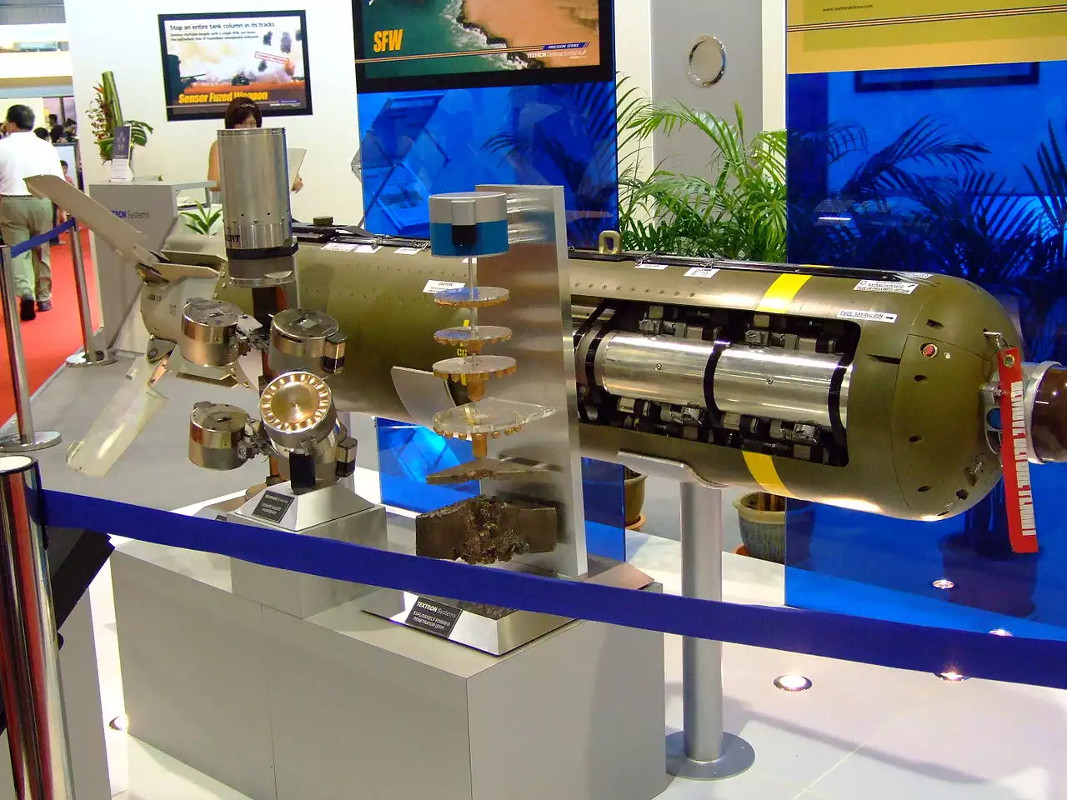
The larger BLU-136/B was supposed to help mitigate these issues to some degree. Combat aircraft could simply employ additional bombs to adequately destroy targets in a particular area, too, but it wouldn’t do anything to improve the weapon’s effectiveness against more heavily armored targets.
These limitations, among other factors, which you can read about in depth here, led the U.S. military to reverse the course of its cluster munitions plans in December 2017. Though the new policy did not change the overall goal of eliminating such weapons with a greater than one percent failure rate at some point in the future, it did delay the implementation of the Pentagon’s self-imposed ban indefinitely and loosen existing rules on what weapons were acceptable for combat use and when.
The video below shows the BLU-108/B smart submunitions from CBU-105/Bs striking a mock convoy during a training exercise.

Regardless, the Air Force remains committed to the cast ductile bomb, which definitely could offer benefits in a wide array of situations, even if cluster munitions remain in U.S. military inventory. The ability to set the fuze in flight gives pilots more flexibility to use the weapons, even in constrained environments, such as dense urban areas in very particular scenarios, whereas an actual cluster bomb would present far too much of a danger to friendly forces or innocent bystanders.
With a low burst height setting, a precision-guided 500-pound or even 250-pound class cast ductile iron might be able to better clear a mass of enemy troops on foot or in light vehicles from a particular area, while leaving tertiary structures relatively unscathed. The Air Force has already expressed an interested in a lightweight version of the warhead as an option for the GBU-39/B Small Diameter Bomb (SDB), a GPS-guided glide bomb with short-range stand-off attack capability, which could offer additional highly localized anti-personnel capabilities. A similar lighter weight variant could go into the future dual mode GBU-53/B SDB II.
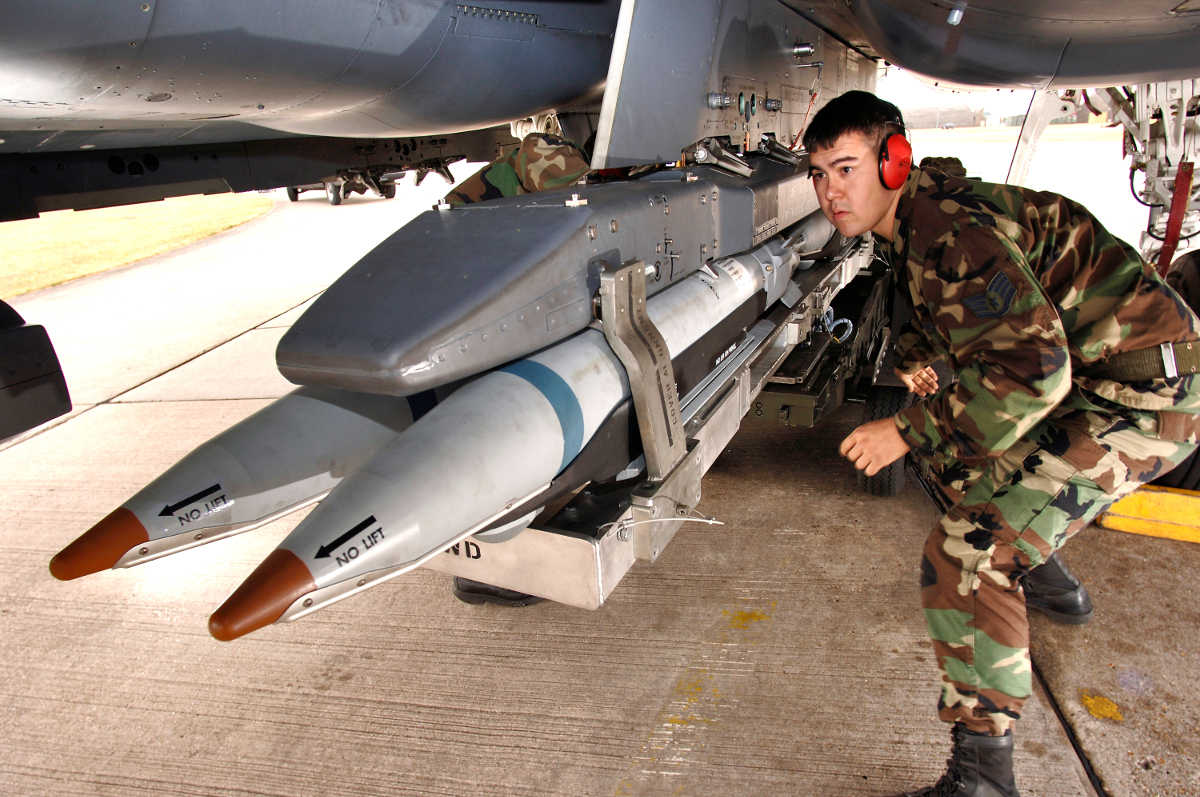
Combining the bombs like the BLU-134/B and -136/B with a more complex targeting system that can assign multiple impact points and fuze burst heights at once might give pilots the ability to even better mimic the effects of a cluster munitions when those weapons are otherwise inappropriate for tactical or political reasons. This might allow them to mix effects, too, such as using a standard bomb to blast a hole in the roof of building and then dropping a cast ductile iron bomb inside for maximum damage, something that would be impossible to do reliably with a traditional cluster bomb. Another possibility could be to employ a bunker buster on a more hardened structure and then to catch personnel fleeing out into the open with a burst of shrapnel.
The video below shows a U.S. military air strike on Mosul, Iraq in 2016 involving multiple bombs impacting in rapid succession. Using cast ductile iron bombs in this matter might produce effects similar to a traditional cluster munition over a wider area.

Cast ductile iron bombs could be particularly appealing to foreign allies and partners who have signed up to the CCM, but still have a need for an area effect bomb. On the other hand, it might be just as good an option for U.S. government-facilitated sales to countries with poor track records of avoiding collateral damage with traditional cluster munitions. The Air Force’s February 2018 request for information regarding the BLU-136/B specifically notes that the production totals could include bombs set aside for foreign military sales cases.
So, while the U.S. military now plans to keep cluster munitions for the time being, the cast ductile iron bomb still looks set to become an important additional capability for the Air Force, as well as potentially other branches of the American military and foreign allies and partners.
Contact the author: joe@thedrive.com
